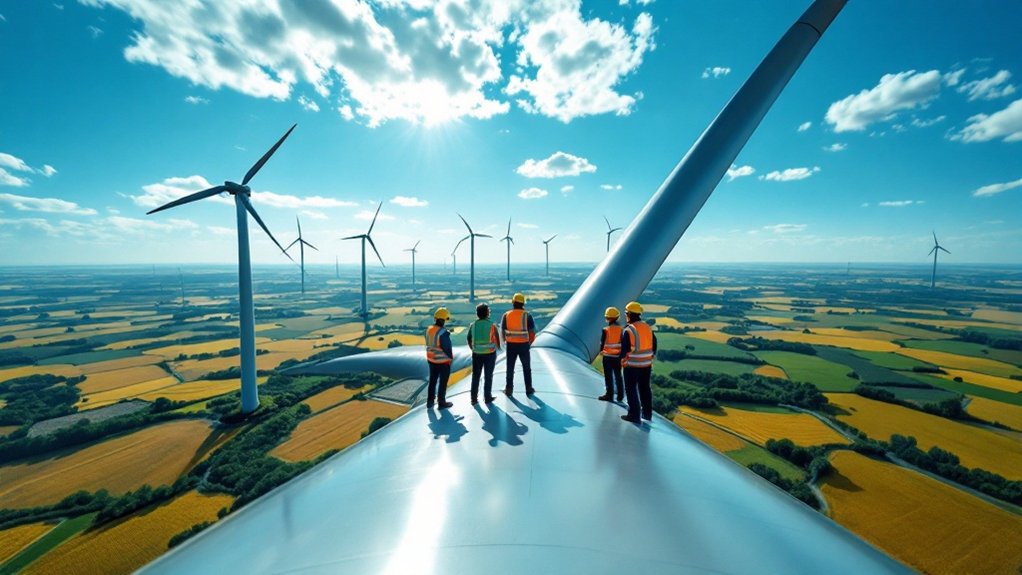
Are New Wind Turbine Technologies Worth the Investment?
The question of whether new wind turbine technologies merit investment is increasingly relevant in today’s energy landscape. With advancements in design and materials, these technologies promise improved efficiency and long-term savings. However, the initial costs can be intimidating. Investors must weigh potential benefits against financial risks. As the renewable energy market evolves, understanding these dynamics becomes essential for informed decision-making. What factors will ultimately determine the success of these innovations?
Overview of Current Wind Turbine Technologies
As the demand for renewable energy continues to grow, current wind turbine technologies have evolved considerably to enhance efficiency and sustainability. Modern turbines now feature larger rotor diameters and taller towers, allowing them to capture more wind energy at greater heights. Innovations such as variable speed generators improve energy output by adjusting to changing wind conditions. Additionally, advancements in materials, such as lighter composites, have reduced turbine weight while maintaining structural integrity. Smart technology integration enables real-time monitoring and predictive maintenance, minimizing downtime. These developments not only increase energy production but also reduce the environmental footprint of wind farms. Overall, the combination of enhanced design and technological integration positions contemporary wind turbines as a crucial component of the global shift towards sustainable energy solutions. Furthermore, the renewable energy sector is a significant source of job creation that supports economic growth and energy security.
Recent Innovations Transforming the Wind Energy Sector
Recent innovations in the wind energy sector are reshaping traditional approaches to harnessing wind power. Significantly, vertical axis turbines are gaining attention for their efficiency in turbulent conditions, while floating wind farms are expanding the geographical potential for energy generation. These advancements signal a pivotal shift towards more adaptable and sustainable wind energy solutions. As the importance of renewable energy continues to grow, investments in these technologies become increasingly vital for a sustainable future.
Vertical Axis Turbines
While many advancements in wind energy focus on horizontal axis turbines, vertical axis turbines (VATs) are emerging as a transformative alternative. These turbines offer distinct advantages, including the ability to capture wind from any direction, simplifying installation and maintenance. Recent innovations have led to improved designs that enhance efficiency and durability, making VATs suitable for urban environments where space is limited. Additionally, their lower center of gravity reduces the risk of structural failure, while quieter operation minimizes disturbances in residential areas. As technological advancements continue, VATs present an appealing option for diversifying wind energy solutions, particularly in locations where traditional turbines may not be feasible. This shift could potentially enhance energy accessibility and sustainability in various regions.
Floating Wind Farms
Although traditional wind farms have long been anchored to the seabed, floating wind farms are revolutionizing the industry by harnessing wind energy in deeper waters where conventional turbines cannot be installed. These innovative structures utilize buoyant platforms to support turbines, allowing for installations farther offshore, where wind speeds are typically higher and more consistent. Recent advancements in materials and technology have enhanced the stability and efficiency of these floating systems, making them a viable alternative to traditional setups. As countries aim to meet renewable energy targets, floating wind farms are garnering attention for their potential to notably increase energy output without the spatial limitations of coastal land. This transformative approach could play an essential role in the future of sustainable energy generation.
Evaluating the Economic Viability of New Technologies
Evaluating the economic viability of new wind turbine technologies requires a thorough cost-benefit analysis to determine their financial feasibility. By appraising initial investments against potential long-term savings, stakeholders can make informed decisions about which innovations to adopt. This process is essential for ensuring sustainable growth in the wind energy sector. Additionally, the adoption of advanced collaboration tools can enhance communication and project management within teams involved in wind energy projects.
Cost-Benefit Analysis
A thorough cost-benefit analysis serves as an essential tool for evaluating the economic viability of new wind turbine technologies. This analysis involves comparing the total expected costs of implementation, including initial capital investments, operational expenses, and maintenance, against the anticipated benefits, such as energy output, efficiency improvements, and potential revenue generation. Key factors include appraising technological advancements that may reduce costs or enhance performance over traditional systems. Additionally, external factors, such as government incentives or market demand for renewable energy, play a critical role in determining overall feasibility. By systematically quantifying these elements, stakeholders can make informed decisions regarding investment in new technologies, ensuring alignment with financial objectives and sustainability goals.
Long-Term Savings Potential
Long-term savings potential is a critical consideration when evaluating the economic viability of new wind turbine technologies. These innovations often promise reduced operational and maintenance costs, which can yield substantial savings over time. Enhanced efficiency and durability can lead to increased energy output, thereby maximizing revenue streams for operators. Furthermore, advancements in materials and design may reduce the frequency of repairs and replacements, further contributing to cost savings. As energy prices fluctuate, the ability of new technologies to generate stable, lower costs becomes increasingly valuable. Ultimately, while initial investments may be high, the long-term financial benefits can make new wind turbine technologies a prudent choice for sustainable energy production and economic stability in the energy sector.
Environmental Impact and Sustainability Considerations
While wind turbine technologies offer a promising alternative to fossil fuels, their environmental impact and sustainability considerations warrant careful examination. The manufacturing process of turbine components involves resource extraction, which can lead to habitat disruption and pollution. Additionally, the disposal of turbine blades poses a challenge, as they are often made from non-recyclable materials. However, wind energy notably reduces greenhouse gas emissions and reliance on finite resources, contributing to a cleaner environment. The land footprint of wind farms is relatively small compared to fossil fuel extraction sites, allowing for co-use with agriculture or grazing. Overall, while the sustainability of wind turbine technologies is generally favorable, addressing their environmental footprint remains essential for maximizing their positive impact. Embracing minimalism in lifestyle can also lead to an increased focus on sustainable practices, further enhancing the benefits of renewable energy solutions.
Challenges Facing the Adoption of Advanced Wind Solutions
Despite the benefits of wind energy highlighted in previous discussions, several challenges hinder the widespread adoption of advanced wind solutions. High initial costs associated with new technologies often deter potential investors, as the financial return may take years to materialize. Additionally, regulatory hurdles, including complex permitting processes, can slow down project development and discourage innovation. Technical limitations, such as integration with existing power grids and the need for specialized maintenance, further complicate implementation. Public opposition, often rooted in concerns over land use and noise, can also pose significant obstacles. Finally, a shortage of skilled labor to operate and maintain advanced systems limits the effective deployment of these technologies, stalling progress in the wind energy sector. Furthermore, the concentration of power within oligarchic systems can impede investments in renewable energy technologies due to the prioritization of short-term profits over long-term sustainability.
Future Trends in Wind Energy Investment
As the global demand for renewable energy continues to rise, investment in wind energy is poised for significant growth, driven by technological advancements and an increasing emphasis on sustainability. Future trends indicate a shift toward larger, more efficient turbines that harness wind energy more effectively. This evolution is complemented by innovations in energy storage solutions, enabling better integration of wind power into existing energy grids. Moreover, offshore wind projects are gaining momentum, attracting substantial investment due to their potential for higher energy yields. Additionally, policy frameworks and government incentives are likely to support this change, encouraging private sector participation. Collectively, these trends suggest a robust future for wind energy investments, fostering a more sustainable energy landscape.
Frequently Asked Questions
How Do New Wind Turbine Technologies Compare to Traditional Fossil Fuels?
New wind turbine technologies offer cleaner energy production compared to traditional fossil fuels, reducing greenhouse gas emissions and reliance on finite resources. Their efficiency and scalability present significant advancements in sustainable energy solutions for future generations.
What Are the Maintenance Costs Associated With Advanced Wind Turbine Technologies?
Maintenance costs for advanced wind turbine technologies typically vary based on design and location, but they generally include routine inspections, component replacements, and repairs, which can cumulatively impact overall operational expenses compared to traditional systems.
How Long Does It Take to See Returns on Investment for New Wind Technologies?
The time required to achieve returns on investment for new wind technologies varies considerably, typically ranging from five to fifteen years, influenced by factors like installation costs, energy prices, and operational efficiency of the systems employed.
Are There Government Incentives for Investing in New Wind Turbine Technologies?
Various government incentives exist to encourage investment in new wind turbine technologies. These may include tax credits, grants, and subsidies, aimed at reducing initial costs and promoting renewable energy development to combat climate change and enhance energy independence.
What Role Do Local Communities Play in Wind Turbine Project Development?
Local communities greatly influence wind turbine project development through public consultations, feedback on environmental impacts, and support or opposition. Their involvement often shapes project design, ensuring alignment with local needs and fostering community acceptance and participation.
Conclusion
To summarize, the investment in new wind turbine technologies presents a promising opportunity for enhancing energy efficiency and reducing operational costs. With ongoing innovations and supportive government incentives, the long-term economic viability of these advancements is increasingly evident. Additionally, their potential to greatly lower greenhouse gas emissions aligns with global sustainability goals. Despite facing challenges in adoption, the future trends in wind energy investment indicate a strong shift towards embracing these advanced solutions for a greener energy landscape.



